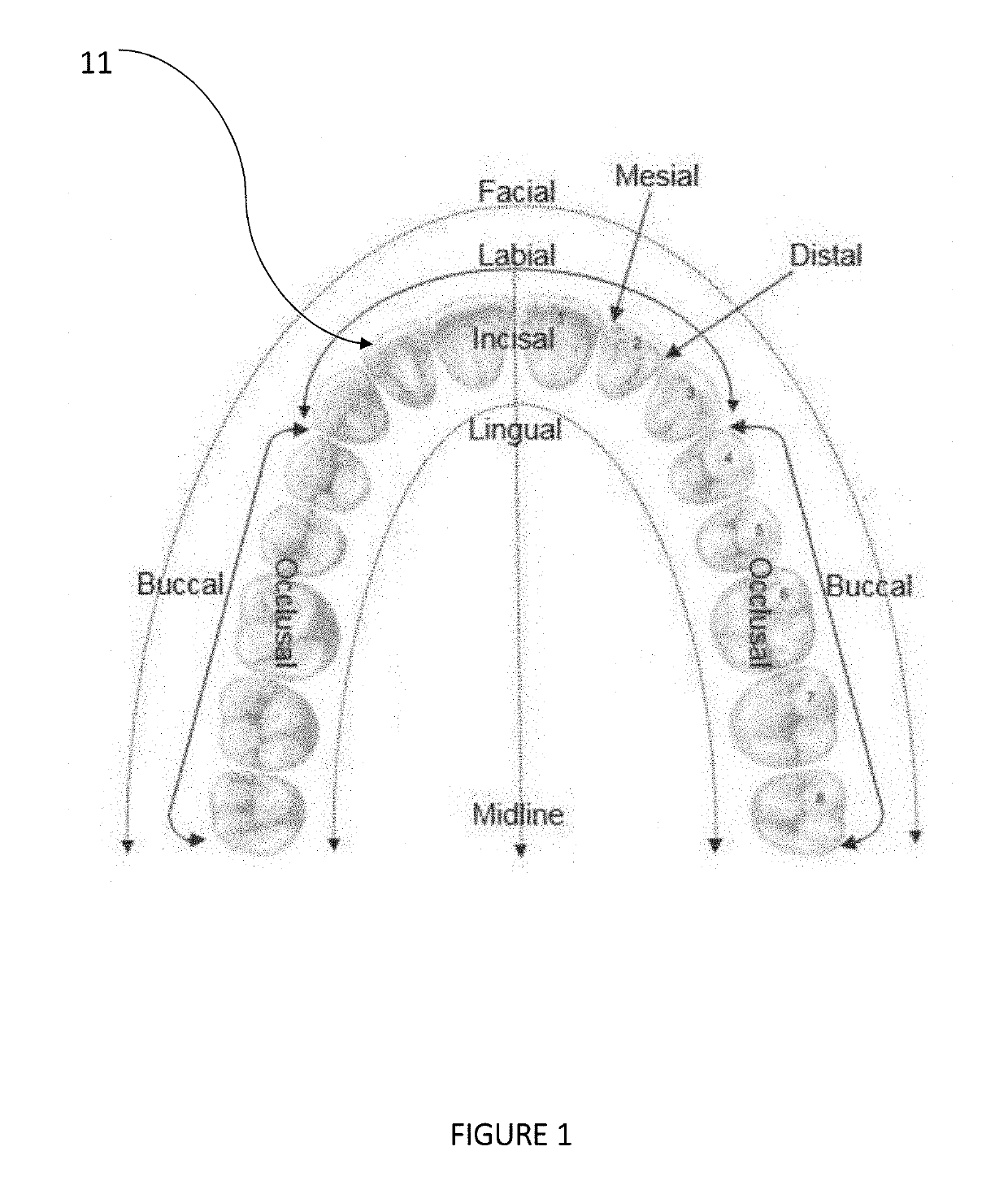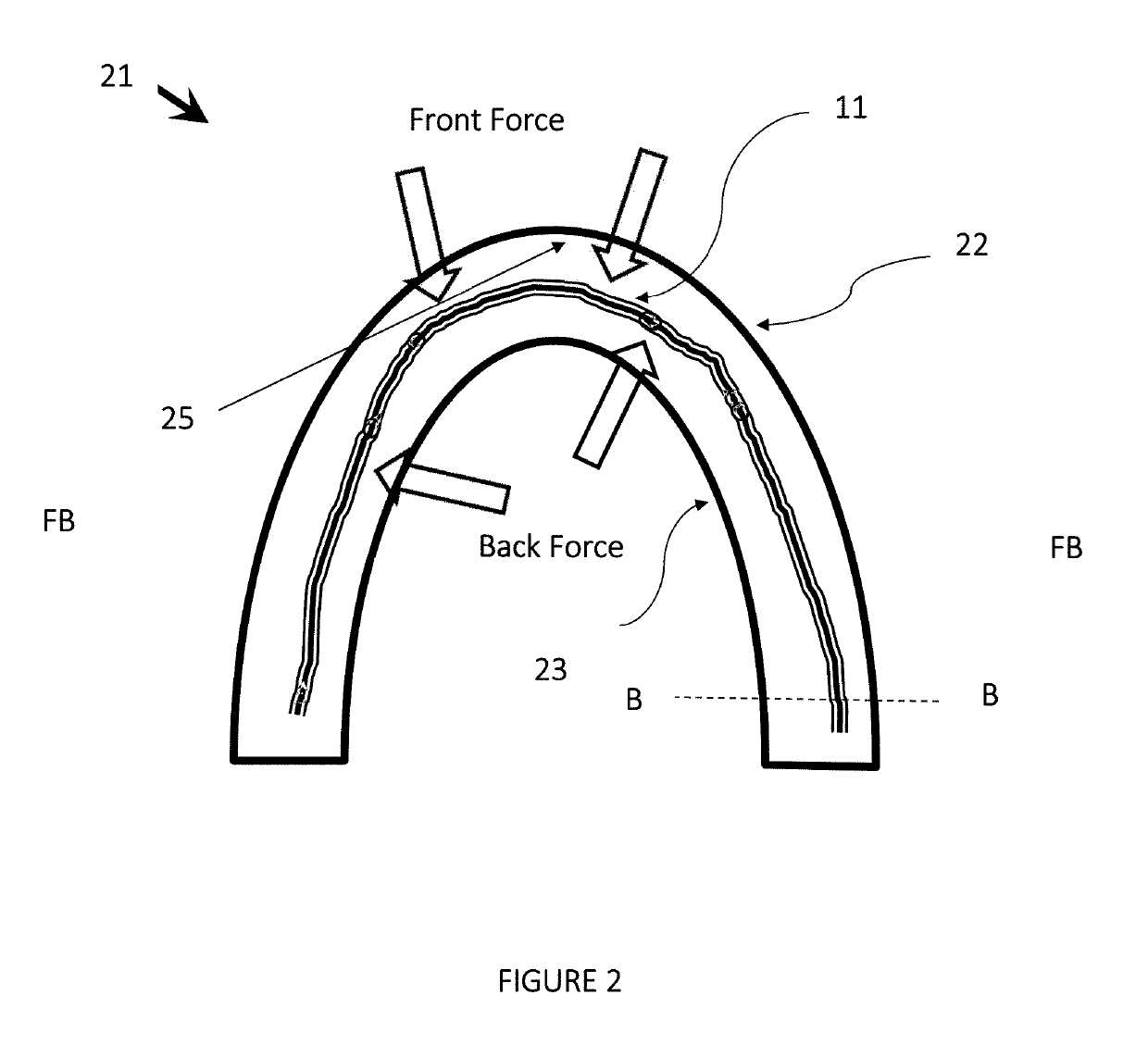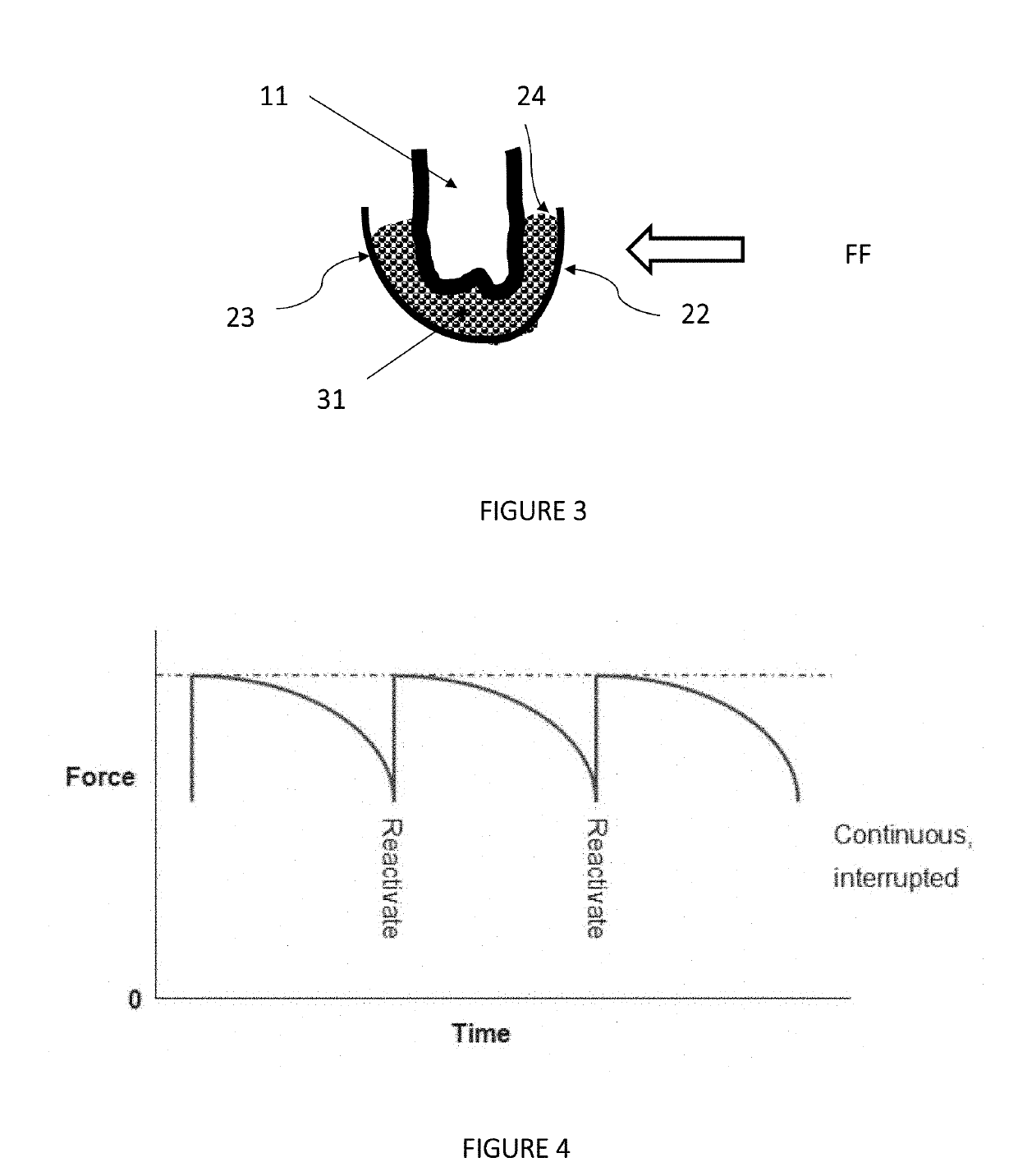Teeth Aligner System
a technology of aligner and teeth, which is applied in the field of improved teeth realignment system, to achieve the effect of facilitating straightening, facilitating straightening, and facilitating removal of the applian
- Summary
- Abstract
- Description
- Claims
- Application Information
AI Technical Summary
Benefits of technology
Problems solved by technology
Method used
Image
Examples
example 1
[0217]In use, an orthodontist creates and shapes a set of customized removable thermoplastic aligners for a patient. Once these aligners are formed, a force transfer layer is formed by brushing a gel onto the inner surface of each aligner (e.g. using points of a gel applicator) and inserted onto the teeth.
[0218]Generally, there are several characteristics that occur:[0219]1. The composition and properties of saliva does not significantly affect the ability of the gel to attach to the tooth enamel.[0220]2. After setting at the room temperature such as the intraoral temperature of 37 C the following variations of temperature of 4ł C to 55ł C in situ due to hot or cold food or drinks does not significantly affect gel de-bonding
[0221]Application of Gel to Aligner Interface[0222]a) The gel is to be applied to the aligner. It also allows incubate of the gel to ensure it is dry before applying loads etc.
[0223]Materials:[0224]a) Gel interface (Silpuran 2403 of Wacker AG)[0225]b) ‘Points— di...
example 2
[0237]In another example using the applicator of FIGS. 6 and 7, after the orthodontist creates and shapes a set of customized liners for the patient, the aligners must have the gel brushed evenly in a thin layer of a predetermined thickness onto the inside surfaces of the aligner and then inserted into the patient.
[0238]Under ambient temperature conditions, the time taken for curing of the gel composition is substantial. To speed up the time of curing and therefore the time that the patient can feel comfortable that the aligner is fully fitted, a heat-generating method is used. In this case the method uses the chemical reaction of dissolution of calcium chloride to provide the heat source.
[0239]At 55ł C it takes 3.3 times quicker to set the gel to an equivalent cure state than at 37é C, the human intraoral temperature.
[0240]The completion of curing (cross linking) in situ (within the oral cavity) provides a bond strength between the force transfer layer of cured gel composition with...
example 3
[0241]In the third example with reference to FIGS. 8, 9, 10 and 11 there is a different heat-generating method allowing the gel composition forming the force transfer layer, to set out of the location on the teeth of the patient.
[0242]It is important for the sake of adhesion and teeth conformity that the gel composition must set with while on the teeth; otherwise, there will be a misfit if the gel cures completely before it is inserted onto the teeth.
[0243]Hence, in this example the gel composition was mixed and placed in a hot water bath at 55é C for 14.5 minutes; and, was applied onto the aligners using the scaffold-tip applicator. The aligners were fit onto the teeth of the patient and left to set for another 30 minutes.
[0244]It is evident that the gel composition almost immediately softens after being exposed to the heat-generating method; then undergoes rapid cure after about 6 minutes. In the soft state the gel can be rolled or shaped and then placed on the aligners rather tha...
PUM
 Login to View More
Login to View More Abstract
Description
Claims
Application Information
 Login to View More
Login to View More - R&D
- Intellectual Property
- Life Sciences
- Materials
- Tech Scout
- Unparalleled Data Quality
- Higher Quality Content
- 60% Fewer Hallucinations
Browse by: Latest US Patents, China's latest patents, Technical Efficacy Thesaurus, Application Domain, Technology Topic, Popular Technical Reports.
© 2025 PatSnap. All rights reserved.Legal|Privacy policy|Modern Slavery Act Transparency Statement|Sitemap|About US| Contact US: help@patsnap.com



